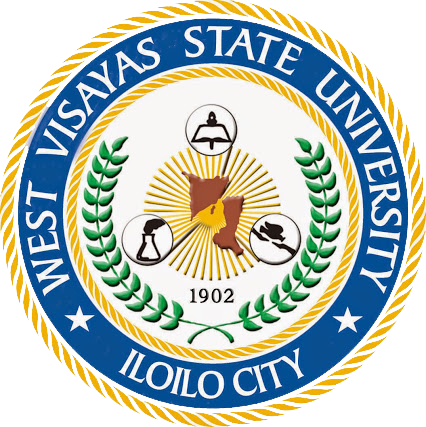A modified adaptive synthetic SMOTE approach in graduation success rate classification
| dc.contributor.author | Gameng, Hazel | |
| dc.contributor.author | Gerardo, Bobby | |
| dc.contributor.author | Medina, Ruji | |
| dc.date.accessioned | 2024-08-28T07:21:21Z | |
| dc.date.available | 2024-08-28T07:21:21Z | |
| dc.date.issued | 2019 | |
| dc.identifier.citation | Gameng, H. A., Gerardo, B. D., & Medina, R. P. (2019). A modified adaptive synthetic SMOTE approach in graduation success rate classification. International Journal of Advanced Trends in Computer Science and Engineering, 8(6), 3053-3057. https://doi.org/10.30534/ijatcse/2019/63862019 | en |
| dc.identifier.issn | 2278-3091 | |
| dc.identifier.uri | https://hdl.handle.net/20.500.14353/641 | |
| dc.description.abstract | In the real research situation, the oversampling method in data preprocessing is used to solve the problem in imbalanced data. This imbalance may lessen the capability of classification algorithms to identify instances of interest that lead to misclassification such as false positive generation. These imbalanced datasets come from fields of finance, health, education, among other areas. Academic related data such as graduate success rate on higher education are at times imbalanced. One of the established oversampling methods is the Synthetic Minority Oversampling Technique (SMOTE) with Adaptive Synthetic (Adasyn) SMOTE as one of its many variations. K-Nearest Neighbors (KNN) calculations using Euclidean distance is an embedded in Adasyn. In this study, Manhattan distance is utilized in the KNN calculations. The researchers correspondingly gathered actual data from open admission programs of Davao del Norte State College for the training and testing, which consists of 14 features and 897 records. This modified Adasyn was tested on an imbalanced and primary dataset on graduation success rate using logistic regression and random forest as the classification algorithms. This was evaluated in terms of the performance measurements on overall accuracy, precision, recall, and F1 score. Results showed that the modified Adasyn dominated on each performance metrics over SMOTE and Adasyn. Thus, proving that the modified Adasyn is reliable in decreasing misclassification on the graduate success rate dataset. | en |
| dc.description.sponsorship | The authors are grateful to the reviewers for the positive comments and recommendations. This work is supported by the Philippine government through the Commission on Higher Education. The authors are thankful for the financial assistance provided for in this study. | en |
| dc.language.iso | en | en |
| dc.publisher | World Academy of Research in Science and Engineering | en |
| dc.relation.uri | http://www.warse.org/IJATCSE/static/pdf/file/ijatcse63862019.pdf | en |
| dc.subject | Adaptive synthetic SMOTE | en |
| dc.subject | Classification | en |
| dc.subject | Graduate success rate | en |
| dc.subject | Manhattan Distance | en |
| dc.subject | SMOTE | en |
| dc.subject.lcsh | Graduation (Statistics) | en |
| dc.subject.lcsh | Academic achievement | en |
| dc.subject.lcsh | Adaptive sampling (Statistics) | en |
| dc.subject.lcsh | College graduates--Statistics | en |
| dc.subject.lcsh | Sampling--Technique | |
| dc.subject.lcsh | ||
| dc.subject.lcsh | ||
| dc.subject.lcsh | ||
| dc.subject.lcsh | ||
| dc.subject.lcsh | ||
| dc.subject.lcsh | ||
| dc.subject.lcsh | ||
| dc.title | A modified adaptive synthetic SMOTE approach in graduation success rate classification | en |
| dc.type | Article | en |
| dcterms.accessRights | Open access | en |
| dcterms.subject | Adaptive synthetic | |
| dcterms.subject | K-nearest neighbor | |
| dcterms.subject | Classification algorithms | |
| dcterms.subject | Random forest | |
| dcterms.subject | F1 scores | |
| dcterms.subject | Data preprocessing | |
| dcterms.subject | Imbalanced datasets | |
| dcterms.subject | Precision | |
| dcterms.subject | Synthetic minority oversampling technique | |
| dcterms.subject | Euclidean distance | |
| dcterms.subject | Adasyn | |
| dcterms.subject | Logistic regression | |
| dcterms.subject | Recall | |
| dcterms.subject | ||
| dcterms.subject | ||
| dc.citation.journaltitle | International Journal of Advanced Trends in Computer Science and Engineering | en |
| dc.citation.volume | 8 | en |
| dc.citation.issue | 6 | en |
| dc.citation.firstpage | 3053 | en |
| dc.citation.lastpage | 3057 | en |
| dc.identifier.doi | 10.30534/ijatcse/2019/63862019 | |
| local.isIndexedBy | Scopus | en |
Files in this item
This item appears in the following Collection(s)
-
Journal articles published externally [127]
Journal articles published externally, written by WVSU faculty members, staff, and students


